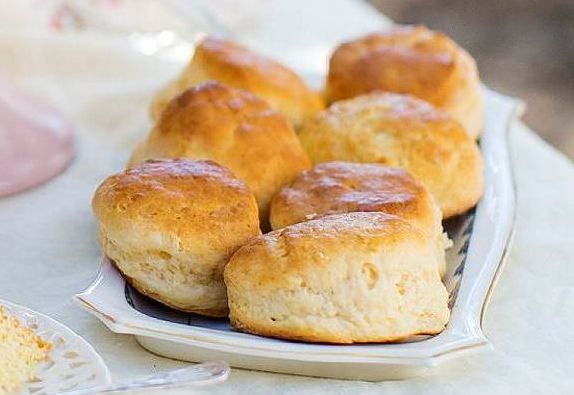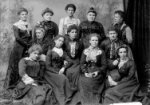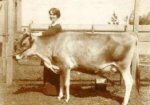Quong Tart, celebrated in the Celestial City: Sydney’s Chinese story exhibition currently showing at the Museum of Sydney, played a significant part in Sydney’s colonial history. The exhibition explores many aspects of Quong Tart’s life, but he is famously remembered for his tearoom establishments, which helped revolutionise casual dining in the city in the late 1800s. Exhibition curator, Nicola Teffer adds to the menu next week, as guest blogger, but today we take a peek at the specialties of the house, at QT’s tearooms, around the turn of the century. Newspaper advertisements promised
Famous Tea
Delicious scones
Unrivaled pastry and cakes
And wedding cakes
Oysters ever fresh
Well-appointed dining saloons
And that polite attention to his customers which makes it a delight to go there.
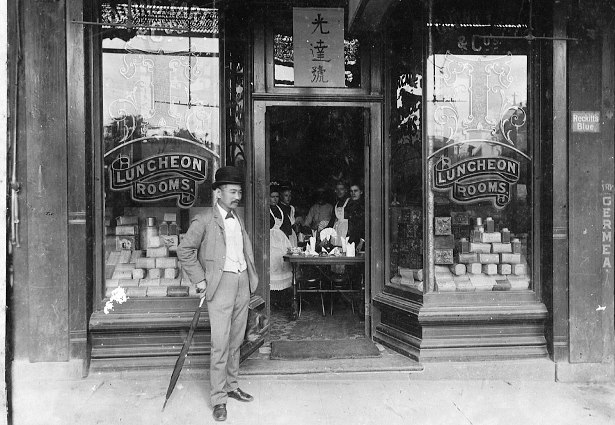
Quong Tart in front of tearooms, possibly 777 George Street. Society of Australian Genealogists PR 6/26/14
On the menu
Surviving menus give us a wonderful idea of the types of dishes enjoyed by customers around the turn of the century. Quite a few have all-but dropped from our modern repertoire, such as Beef Tea, Mock Turtle (which we will explore further in future posts) and Jugged Hare, whereas others, such as fresh fish and oysters, have always been part of Sydney’s food scene.
Corned beef and carrots, boiled fowl and ham, cabbage and mashed potatoes hardly seem worth leaving home for, but provided a good wholesome hot meal to many, no doubt. Rabbit, ox tongue, tripe, lambs brains, liver and bacon are all, again, quite trendy on more adventurous restaurant menus. Desserts remain firmly in the ‘comfort food’ category compared with the more exotic creations we might expect from Sydney restaurants today. Those hoping for rice custard or rhubarb pie would have been disappointed this day:
The typed menu below, undated, includes “latest iced fountain drinks” 6d (sixpence), which were quite a novelty at this time. Carbonated soft drinks were fairly new to the marketplace, and fancy soda fountains were quite a feature in modern establishments, in a similar fashion to the ‘atomic age’ espresso machines in the 1950s – and even today in some cafes.
Famous tea
The beverage Quong Tart was best known for was his selection of teas, many of which he imported from his homeland, served in delicately patterned porcelain teapots.
A memorable experience
Although his tearooms offered much more substantial meals, it is his scones that seem to endure in people’s memories, if this exchange of letters in the 1950’s is any indication:
Sydney Morning Herald, December 21, 1954
Quong Tart Scones
Sir.— In the article about Quong Tart (“Herald,” December 18) no mention was made of the famous Quong Tart scones which replaced the biscuits and soon became a feature of his tea-shops, and for which I was fortunate enough to be given the recipe. It became quite the thing to visit one of his establishments for a cup of tea and scone, which still could be had for three- pence!
IDA D. Chatswood.
Sir.—I remember, as a girl, having morning tea at Quong Tart’s tea-rooms in King Street. Accompanying the tea were the most delicious hot scones—morelike teacakes—simply dripping with butter.
J.B.S. Sydney.
“Quong Tart” scones recipe (below) was published in the Goulburn cookery book referencing Tart’s connection with Braidwood, where his life in colonial Australia began, in the southern highlands district in New South Wales, and possibly, the Scottish family he lived with – hence the scones. The family at Meroogal, who were avid scone makers, kept a 1909 copy of The Goulburn cookery book in their collection of books. Perhaps they used his recipe too?
Quong Tart scones
Ingredients
- 450g (2 2/3 cups) plain flour
- 1 tablespoon baking powder
- 60g butter, cut into small pieces
- 1 egg
- 1 tablespoon caster sugar
- 200ml milk
Note
Quong Tart's Tearooms were famous Sydney institutions in the 1890s, in the Royal Arcade, King Street and the flagship 'Elite tearoom' in the Queen Victoria Market, now the QVB. Although there was an extensive refreshments menu, the tearooms were best known for serving tea with hot, buttered scones. The 'Quong Tart scones' recipe was first published in The Goulburn cookery book in 1904, referencing his childhood connections with Braidwood, in the Goulburn district. These are not the puffy scones that we are used to today but the egg gives them a lovely rich flavour.
Makes about 8
Directions
| Preheat the oven to 250ºC (220ºC fan-forced). Sift the flour, baking powder and a pinch of salt into a large bowl. Rub the butter into the flour until it is fully incorporated into the mixture. Using a wire whisk or electric beaters, beat the egg and sugar together until the sugar has dissolves. Whisk in the milk. Pour into the dry ingredients and mix into a soft, smooth dough, adding 1 tablespoon of water or milk if the mixture is dry. Knead lightly, being careful not to overwork the dough. Sprinkle a board with a light dusting of sugar and roll out the dough to about a 1.5-cm thickness. Cut the dough into rounds or squares, place on a lined baking tray and bake for 10–12 minutes, until golden and risen. Quong Tart's scones were served warm, with butter. You can substitute with jam and cream if you prefer. | |
| Cook's tip: it seems a high setting but the oven must be very hot or the scones may not rise sufficiently. | |
Special thanks to Ralph Hawkins from the Society of Australian Genealogists who provided access to Quong Tart archives and resources, Nicola Teffer, curator, Celestial City: Sydney’s Chinese Story, and Brownyn McKenzie, Sydney Living Museums’ Assistant Registrar, Exhibitions & Loans for alerting us to extant menus and providing photographs.
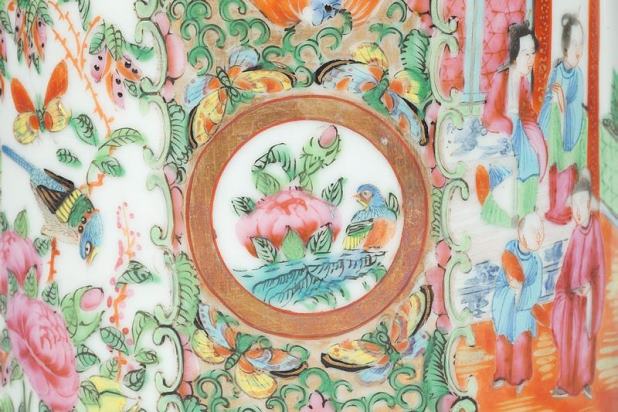
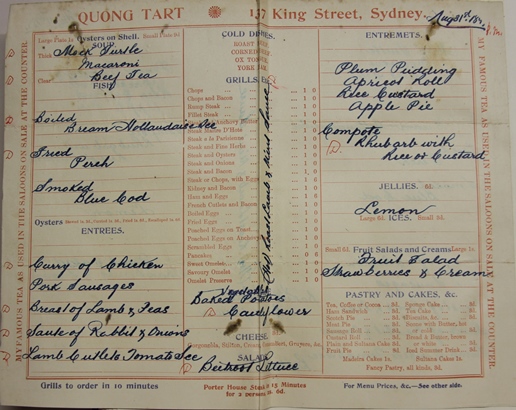
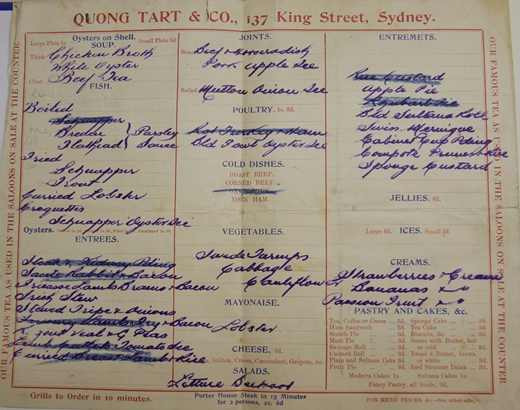
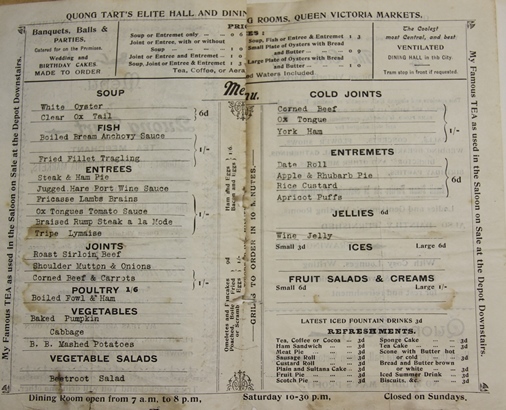
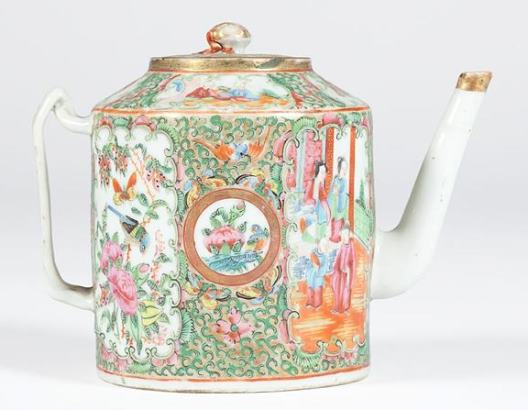

 Print recipe
Print recipe